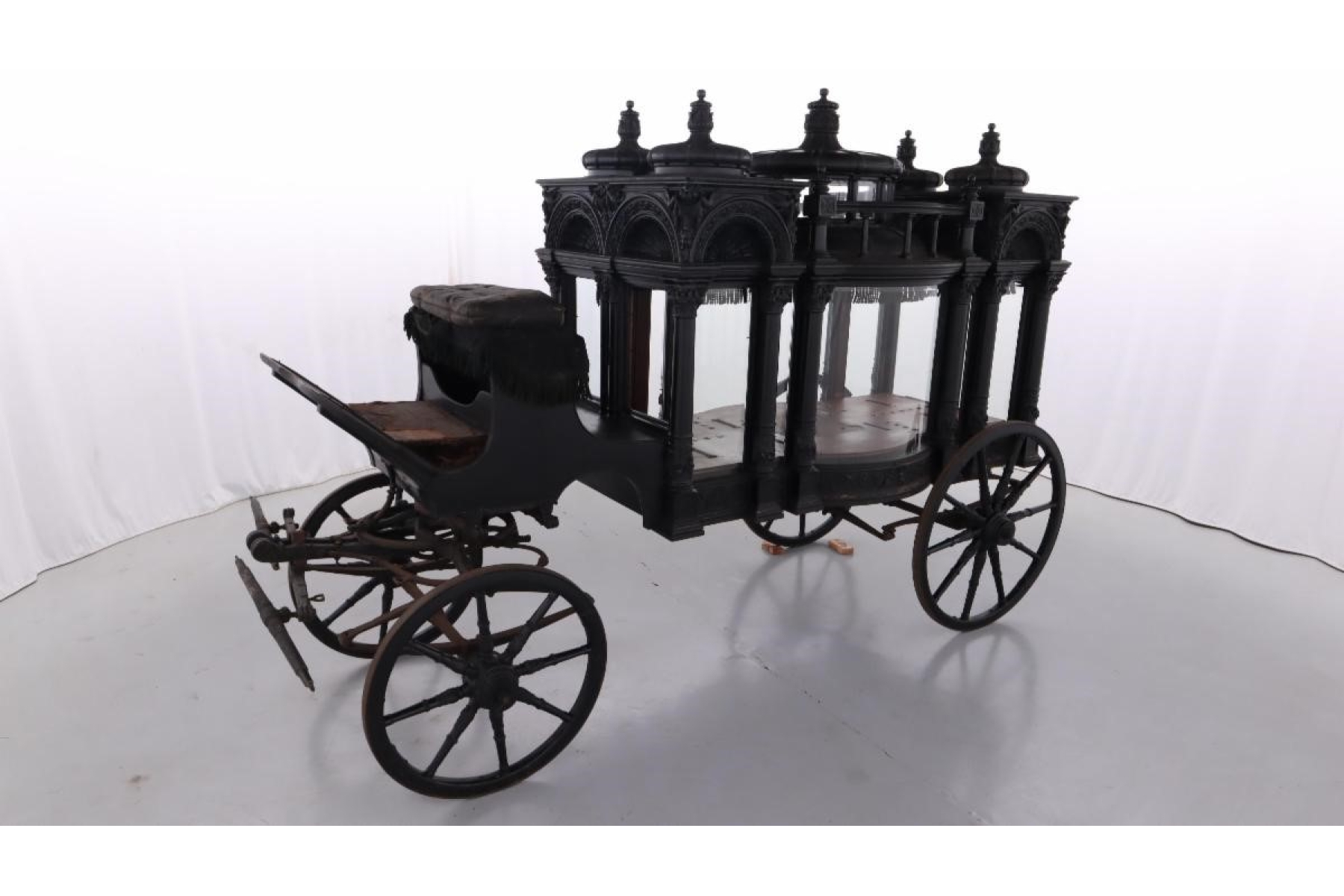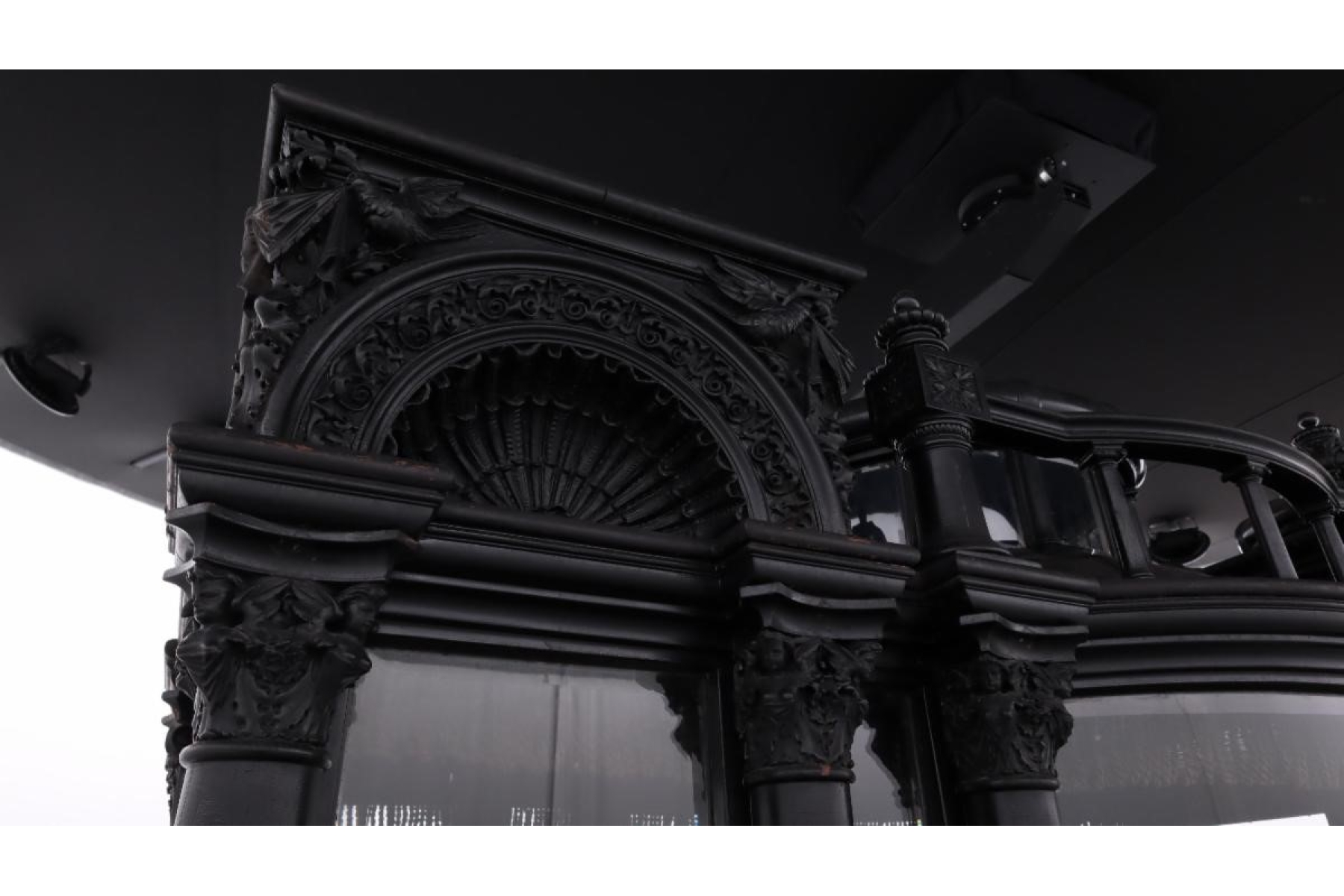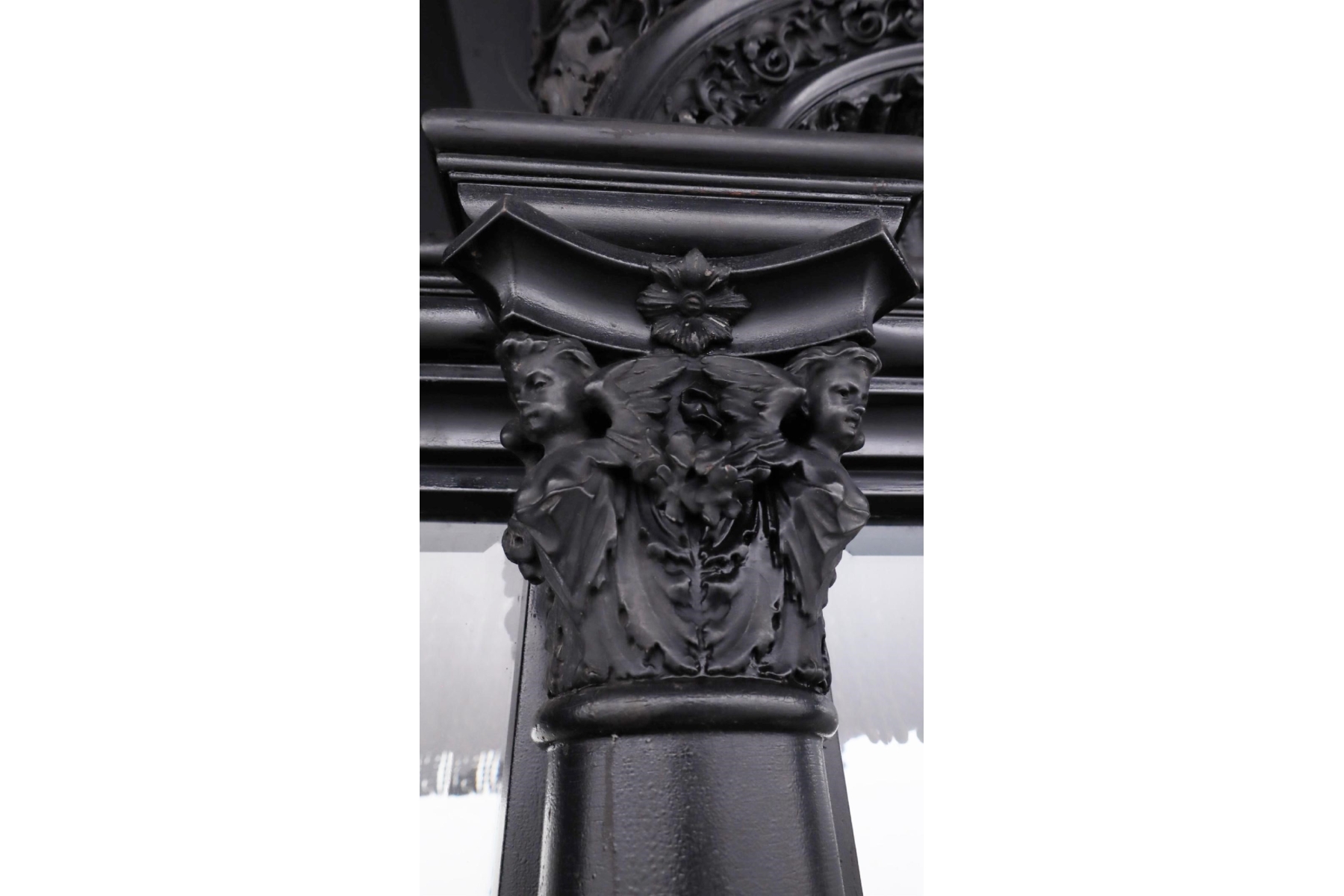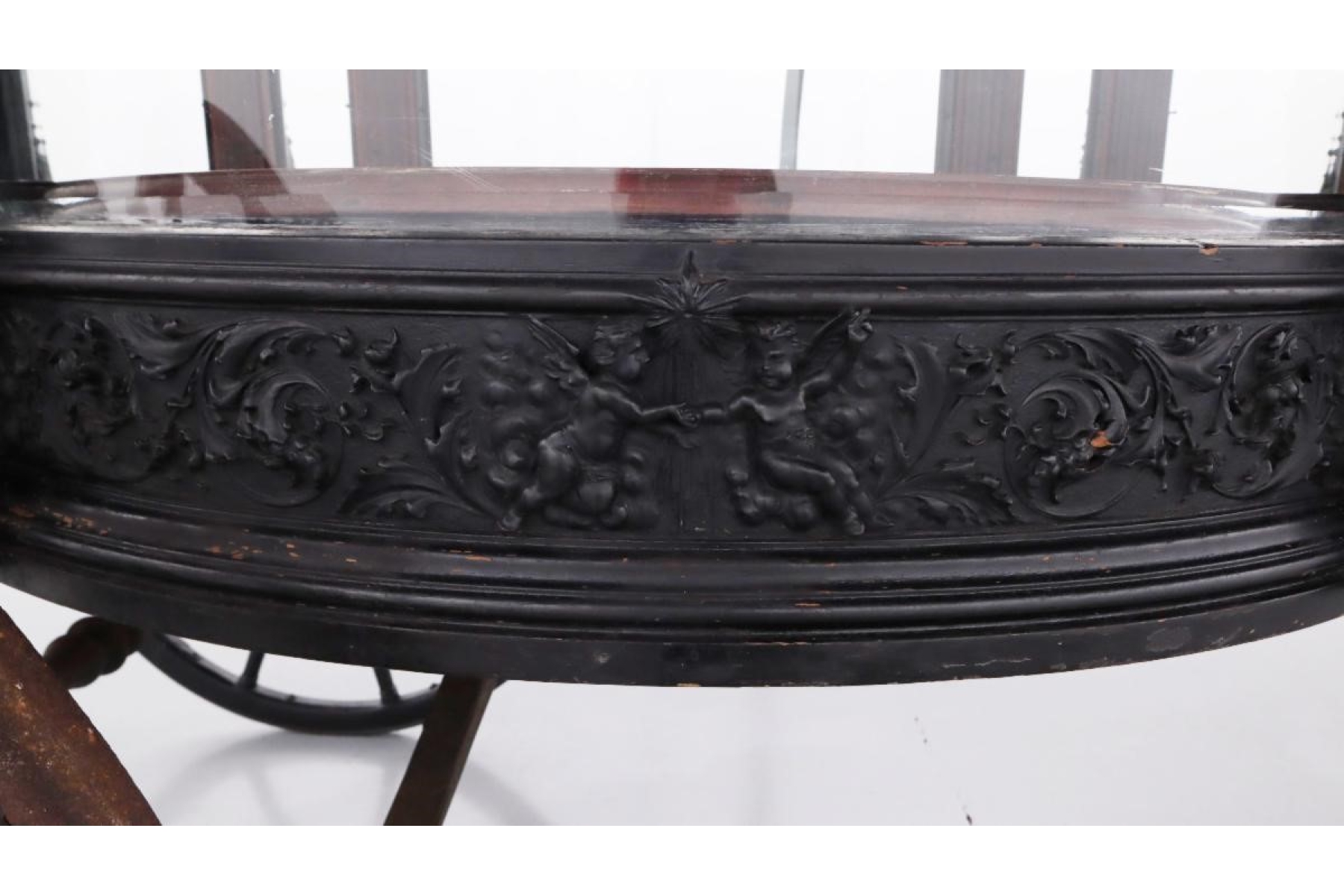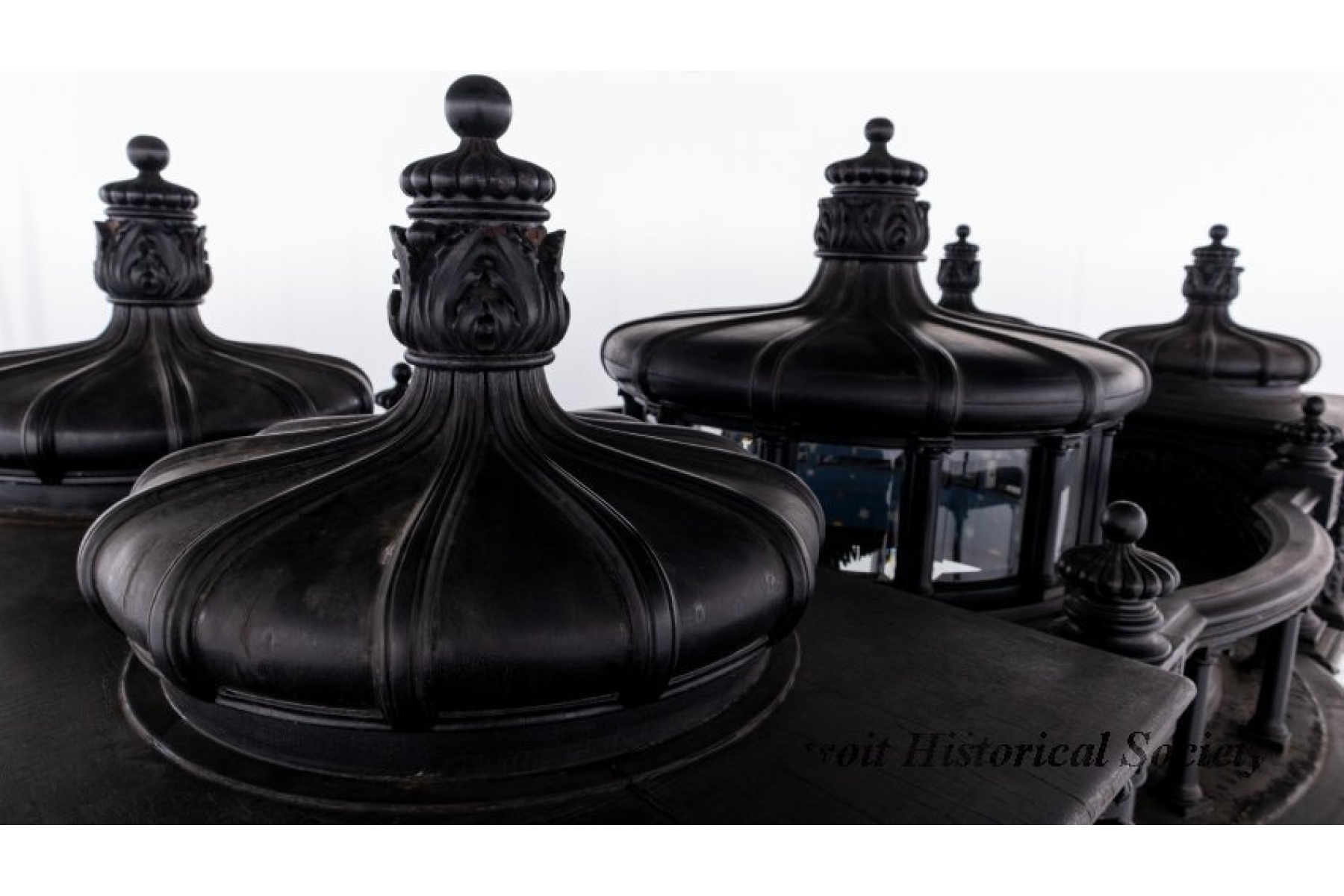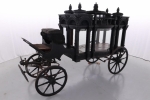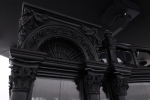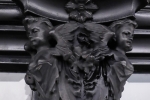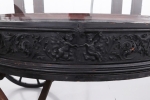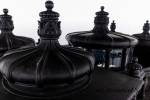Victorian Horse-Drawn Hearse
The Detroit Historical Society is dedicated to sharing the stories of Detroit and the artifacts in our care. Even with two museums and traveling exhibits, we're only able to display a fraction of the artifacts in our collections. Large artifacts can be especially challenging to exhibit or move and don't often photograph well with conventional equipment. This year, we installed a new camera system, called Arc Eye, which has the capability of capturing detailed photographs of 3-dimensional objects. Originally funded by foundation grants, we recently received a prestigious federal grant from the Institute of Museum and Library Services (IMLS) to support hiring and training two new staff members to use the new camera system.
We're excited to share, just in time for Halloween, a story and Arc Eye images of a truly fantastic example of Victorian workmanship, our 1893 Cunningham horse-drawn hearse.
A Grand Dame's Final Resting Place
One of the most prized and awe-inspiring items in the collection at the Detroit Historical Society is an 1893 horse-drawn hearse that debuted at the Chicago World’s Columbian Exposition. The beautiful behemoth - at 14.5 feet long and 9.5 feet tall - was built over three years by the Cunningham Coach Company in New York for approximately $12,000, which is equivalent to about $409,000 in 2023. The Cunningham Coach Company started building elegant hearses before the Civil War and over the next few decades, their coaches and hearses changed the way “funeral cars” were styled.
The late Victorian era (1870s to 1900) had strict social rules around death and mourning. Death went from being a private experience in the 18th century to a very public display in the 19th century. Elaborate pageantry regarding presentation was a necessity to fit societal standards, which would include a hearse such as this in some very wealthy cases. Cunningham Coach Co. thrived during this period and won awards from across the country. During the World's Industrial and Cotton Centennial Exposition in 1884-85, Thomas McPherson wrote, “Within a year or two no progressive funeral director in the country would even consider buying a 'hearse.' Demand nationwide now was for the more modern and up-to-date Funeral Car.” Every Cunningham hearse was truly one-of-a-kind, and they dominated the industry until the early 20th century.
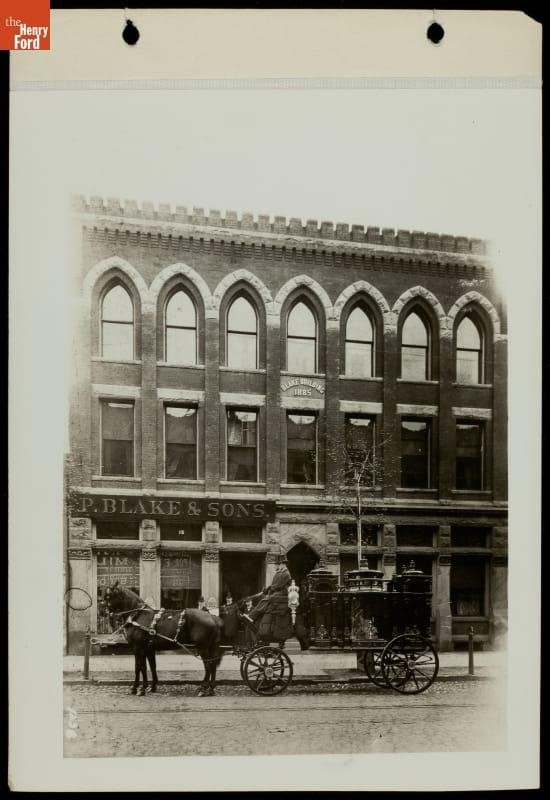
c. 1915 photo of the Cunningham horse-drawn hearse outside of P. Blake & Sons Funeral Building From the Collections of The Henry Ford. Gift of Ford Motor Company
After the Cunningham hearse's debut in Chicago, it was purchased by William Frank Blake of P. Blake & Sons Funeral Home in Detroit. The Cunningham hearse was used by P. Blake & Sons until approximately 1915, when the family donated it to Henry Ford. After successfully saving his childhood home in 1919, Ford began working on The Edison Institute (now The Henry Ford).
The complex opened in 1933 but many of the artifacts collected by Ford, including the Cunningham hearse, never saw the light of day at the new institution. Following Ford’s death in 1947, his family sold off or gave away the unused storage items, including the Cunningham hearse. Charles E. Mack, a Henney-Packard Funeral Coach Company driver, became the next owner. For an unknown reason, Mack tried to dispose of the hearse, but someone convinced him to donate it to the City of Detroit, which he did in 1948. It has resided at the Society's Collection Resource Center ever since. Learn more in our online collection.

